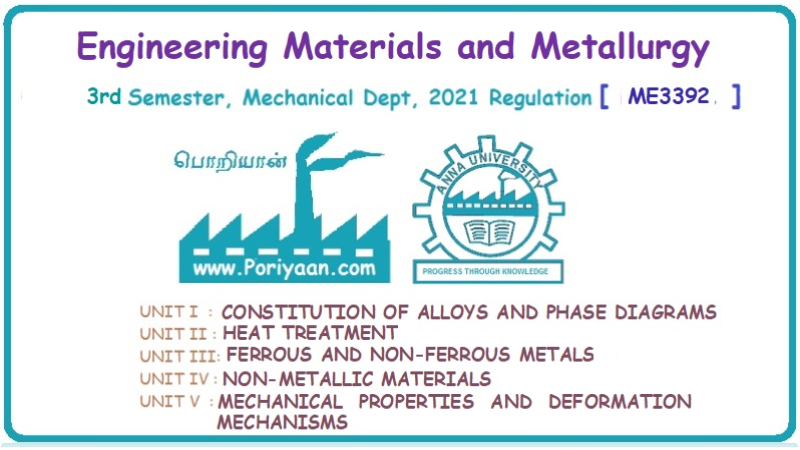Engineering Materials and Metallurgy: Unit I: Constitution of Alloys and Phase Diagrams
Intermediate Phases
Constitution of Alloys
If an alloying element is added in excess of the limit of solid solubility, a second phase appears along with the primary solid solution.
INTERMEDIATE PHASES If an alloying element is added in excess of the limit of solid solubility, a second phase appears along with the primary solid solution. This second phase may be a primary solid solution of base metal in the alloying element, or an 'intermediate' phase (which differs in both crystal structure and properties from primary solid solution). ✓ This intermediate phases may have either narrow or wide ranges of homogeneity, and may or may not include a composition having a simple chemical formula. ✓ Intermediate phases may range between an ideal solid solution and an ideal chemical compound. 1. Intermetallic Compounds ✓ The compounds formed by two or more metals in an apparently stoichiometric proportion is called intermetallic compounds. ✓ Intermetallic compounds are intermediate phases only when they have (i) a narrow range of homogeneity; (ii) simple stoichiometric proportions i.e., chemically correct proportions; and (iii) atoms of identical crystal structures. ✓ Thus a intermetallic compound has a characteristic structure which is generally more complicated than structures of pure metals or solid solutions. ✓ These intermetallic compounds and solid solutions are used to obtain many properties in industrial alloys. Some of the intermetallic compounds are given below. 1. Interstitial compounds ✓ Interstitial compounds are a special case of intermetallic compounds. They form between transition elements upon exceeding the solubility limit of the interstitial element. ✓ Difference between interstitial solutions and interstitial compounds: In interstitial solutions, the solute atoms are not in regular patterns but are randomly distributed throughout the solvent. In interstitial compounds, there is a regular pattern (crystal structure) characteristic of the specific compound. 2. Valency compounds ✓ Intermediate phases which tend to obey valence laws are known as valency compounds. ✓ Examples: These phases are most often in the form of oxides, fluorides, hydrides and carbides. 3. Electron compounds ✓ If two metals consist of atoms of more or less similar size but different valency, then the compounds formed are called electron compounds. ✓ Examples: Cu3Al, CuZn, NiAl, Cu3Sn, etc., are some of the electron compounds.
Engineering Materials and Metallurgy: Unit I: Constitution of Alloys and Phase Diagrams : Tag: : Constitution of Alloys - Intermediate Phases
Related Topics
Related Subjects
Engineering Materials and Metallurgy
ME3392 3rd semester Mechanical Dept | 2021 Regulation | 3rd Semester Mechanical Dept 2021 Regulation
